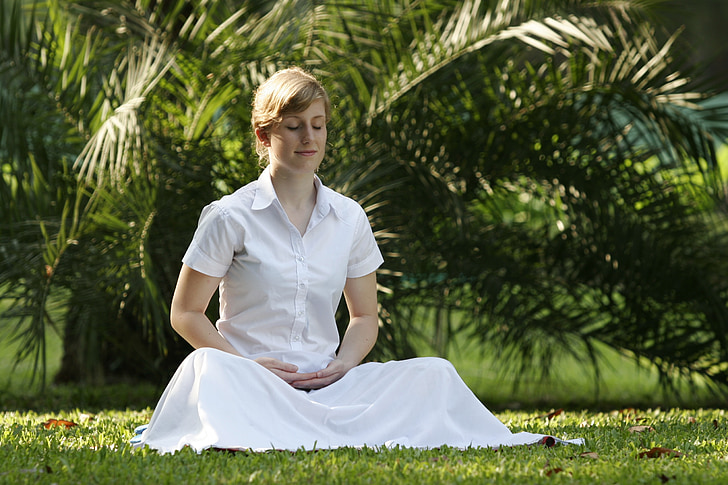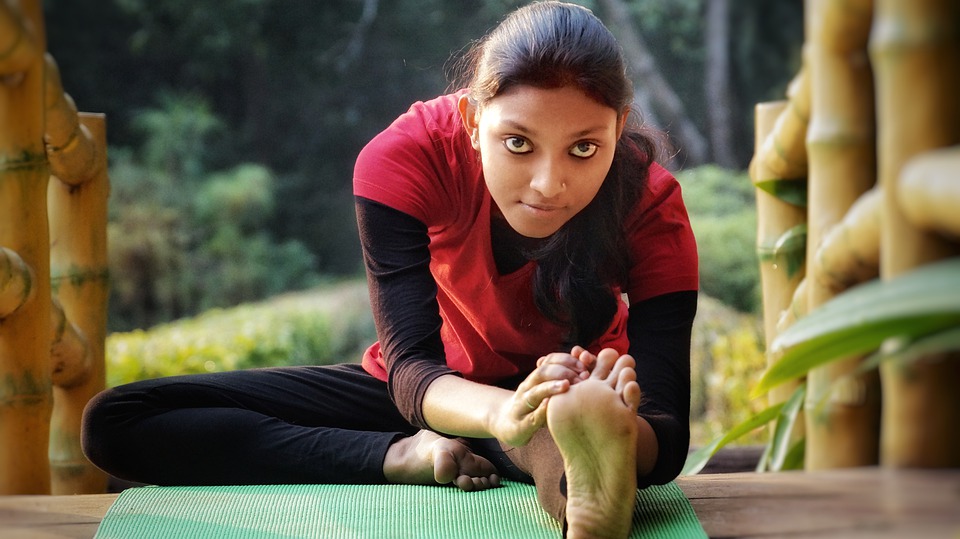3-minute read. Authored by Sonali Dash | Thanks to worldwide lockdowns and fear of Covid-19, many of us are dealing with constant anxiety. Pranayama – one of the 8 limbs of yoga – is a great tool for anyone for physical and mental wellness. In this blog, we will cover Pranayama 101 – the definition as per Patanjali Yoga Sutras – the foundation text of yoga, 4 stages of Pranayama and finally, its benefits.

Pranayama 101
Pranayama is a practice to learn the rules of Prana (life force) in us. Since breath is the link between prana and our body, Pranayama practices involve a lot of breath practices. Several blockages exist at physical and psychological levels (known as Mala and Granthi in yogic terms), which prevent us from realizing our highest potential. All the yogic practices are targeted to clear out these blockages in a systematic manner. Pranayama is one such practice used for both therapeutic needs and spiritual goals.
Pranayama as per Patanjali Yoga Sutra
Pranayama is the 4th limb of Ashtanga Yoga (eight limbs) as described by Sage Patanjali in the text Patanjali Yoga Sutra. We are calling out some of the sutras, written in Sanskrit.
“Tasmin Sati swasa-praswasa-yor-gati-vichhedah pranayamah”
After sitting in a comfortable posture, the practice of changing the pace of inhalation and exhalation is called Pranayama.
4 Stages of Pranayama
Stage 1, 2 & 3
“Bahya-abhyantara-stambha-vrittir-desha-kala-sankhya-bhih paridrishto dirgha- sukshmah”
There are three stages of Pranayama – inhalation, exhalation and holding breath. Several parameters are used to measure progress in these stages of Pranayama, like physical sensation, time, number of rounds. It takes much effort to monitor these aspects at subtle level. This can be achieved by consistent practice.
Stage 4
“Bahyabhyanyara-vishayakshepi chaturthah”
“Tatah kshiyate prakashavaranam”
“Dharanasu cha yogyata manasah”
This is a critical stage and happens on its own when someone practices Pranayama regularly following all yamas and niyamas or dos and don’ts. The practitioner gets complete mastery on his breath and is able to access the prana (life force) as a result of this. When the fourth stage dawns on the practitioner, the veil on the light is lifted up. Here the light refers to the highest level of spiritual attainment. The mind becomes fit for meditation.
Pranayama techniques
The Patanjali Yoga Sutra gives a broad perspective on Pranayama. Other ancient texts on Hatha Yoga, such as Hatha Yoga Pradipika, Gheranada Samhita have described some specific techniques of Pranayama like Anuloma Viloma, Ujjayi, Surya Bhedan, Shitali, Bhramari, Bhastrika, Plavani and Murchha.
Importance of a teacher
Pranayama practices should be customized based on the goals of the practitioner. Hence, it must be learned from a competent teacher who has a deep understanding of yoga and is able to tailor the practice to your needs without deviating from the yogic principles. .
Benefits of Pranayama
Regular practice of pranayama results in Pratyahara, which means withdrawal of senses. Let us try to understand in detail what it exactly implies.
Sense organs are designed to interact with the outside world. When they are not disciplined with the regular practice of Yoga, a lot of energy is wasted while doing these interactions. Pranayama enables practitioners to train their senses to selectively use them for a specific purpose. As a result, the practitioners can conserve energy better. Therefore, a Pranayama practitioner experiences the following benefits:
- Elevated Energy Levels
- Better Focus
- Enhanced Clarity
- Increase in Stamina
- Better Decision Making
- Enhanced Productivity
- Effective Stress Management
It is this mastery of sense organs that also enables us to practice meditation as well since it helps to maintain a steady attention.
Sonali Dash is hosting an online yoga workshop on July 24, 2020. Sign up now. She holds a Post Graduate Degree in Yoga from the Kaivalyadhama Institute. She has worked with working professionals and athletes to achieve their wellness goals with Yoga.


